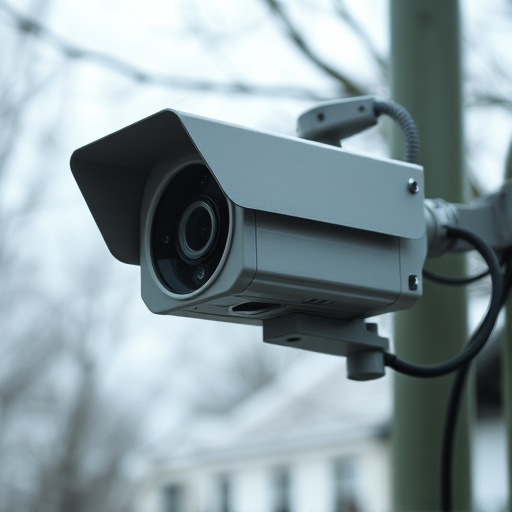Covert recording with wireless nanny cams lacking internet connection raises legal and ethical issues concerning privacy, consent, and surveillance. Such devices must respect individual rights and obtain informed permission for legitimate use, avoiding unethical personal spying. Placement should offer natural cover and minimal distractions, while detection involves a multi-sensory approach combining visual, auditory, digital clues to identify recording locations discreetly.
Uncover the art of secret recording spot identification with our comprehensive guide. In an era where privacy is paramount, understanding covert recording techniques—particularly wireless nanny cam technology without an internet connection—is crucial. This guide navigates legal and ethical considerations while providing insights into choosing ideal secret recording spots, employing effective spotting techniques, and leveraging visual, auditory, and digital cues. Enhance your discretion with these essential strategies.
- Understanding Covert Recording: Legal and Ethical Considerations
- Wireless Nanny Cam: Features and Advantages Without Internet
- Identifying Ideal Secret Recording Spots: Environment and Discretion
- Effective Spotting Techniques: Visuals, Sounds, and Digital Clues
Understanding Covert Recording: Legal and Ethical Considerations
Covert recording, particularly with devices like wireless nanny cams without internet connection, involves capturing audio and video secretly, often to monitor activities in private spaces. Understanding the legal and ethical dimensions is paramount. Legally, many regions have strict guidelines on consent, privacy, and surveillance, especially in domestic settings. Using a covert recording device without informing the individuals being recorded could be considered an invasion of privacy and lead to legal repercussions.
Ethically, the use of such devices raises concerns about trust, transparency, and individual freedoms. It’s essential to consider the context and purpose: whether it’s for legitimate security reasons or personal snooping. Respecting privacy rights and ensuring informed consent from all parties involved is crucial to maintaining ethical standards in covert recording practices.
Wireless Nanny Cam: Features and Advantages Without Internet
A Wireless Nanny Cam Without Internet Connection offers a discreet and effective solution for monitoring sensitive areas. Unlike traditional cameras that rely on constant internet connectivity, these devices are designed to operate independently, capturing and storing footage locally. This feature ensures uninterrupted surveillance even in locations with unreliable or non-existent internet access.
The primary advantage lies in their self-sufficiency, allowing for real-time observation without the need for constant data transmission. These cameras utilize internal memory or removable storage media to record videos and images, making them ideal for remote sites, outdoor environments, or situations where maintaining a continuous online connection is impractical. This autonomy also preserves privacy by preventing potential interference from external networks.
Identifying Ideal Secret Recording Spots: Environment and Discretion
When it comes to identifying ideal secret recording spots, the environment and level of discretion are paramount. For situations where you need a wireless nanny cam without internet connection, consider areas that offer natural cover and minimal noise distractions. Spots like empty cabinets, behind large potted plants, or under desks can provide excellent hiding places for surveillance devices. The goal is to blend in seamlessly with the surroundings, ensuring no one suspects a hidden camera.
Discretion is key to maintaining secrecy. Choose locations where the recording device can operate without drawing attention. Avoid high-traffic areas and places where individuals might regularly inspect or move around frequently. A well-placed wireless nanny cam should remain unnoticed for extended periods, capturing footage unobstructed.
Effective Spotting Techniques: Visuals, Sounds, and Digital Clues
Effective spotting techniques for covert recordings rely on a multi-faceted approach, leveraging visual, auditory, and digital clues. One of the most powerful tools is a Wireless Nanny Cam Without Internet Connection, which allows for discreet observation without raising suspicion. These devices can capture high-quality video and audio, enabling precise identification of recording spots. Visual cues, such as unique furniture arrangements or distinctive decorations, play a crucial role in pinpointing locations. Sounds, both ambient and specific to the environment, can also serve as digital clues, helping to triangulate the position of the recorder.
Additionally, digital remnants left by the recording device itself are invaluable. Metadata embedded within recorded files, GPS coordinates from mobile devices used for covert recording, or even subtle interference on wireless networks can all provide critical hints. By combining these techniques—visual, auditory, and digital—individuals can significantly improve their ability to identify covert recording spots, ensuring a more comprehensive approach to privacy protection.
The art of covert recording, while powerful, demands a delicate balance between privacy and security. By understanding legal boundaries and ethical guidelines, individuals can leverage tools like wireless nanny cams without an internet connection for legitimate purposes. Choosing the right spots, considering environmental factors, and employing sophisticated spotting techniques are key to successful secret recordings. Armed with this knowledge, users can navigate this complex landscape, ensuring discreet and effective surveillance while respecting personal privacy.
